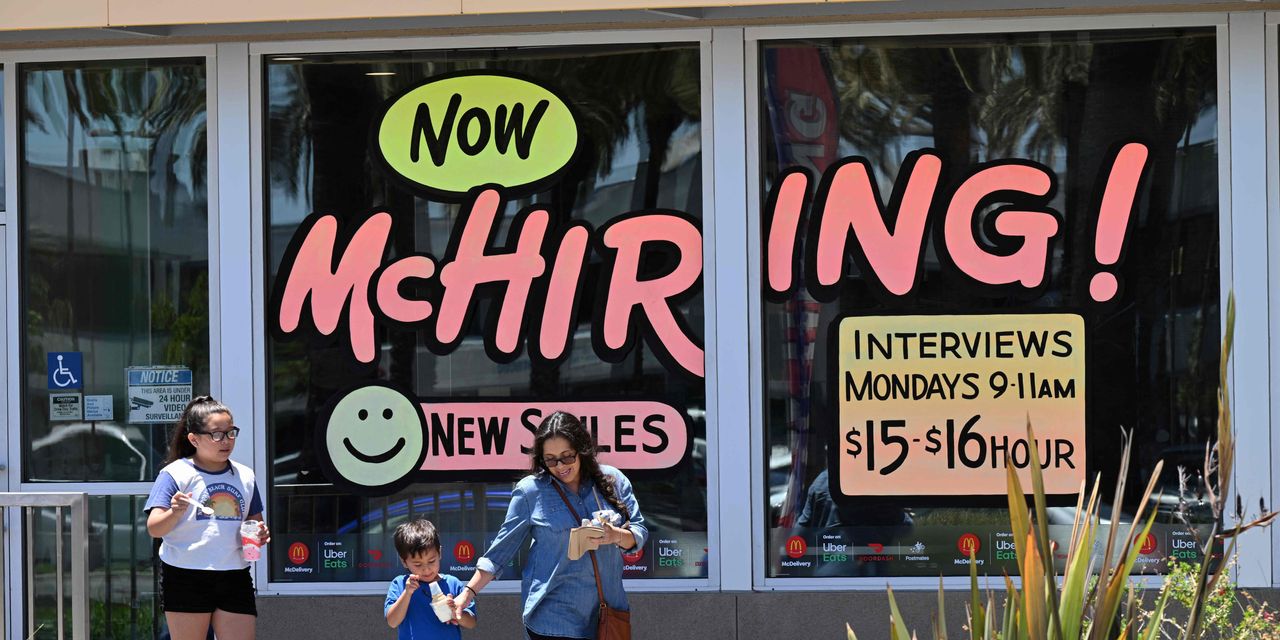Will more jobs mean higher wages?
The government’s latest jobs report showed the U.S. economy gained 528,000 jobs last month, with the unemployment rate falling to 3.5% from 3.6% the previous month. The sharp rise in hiring surprised Wall Street: Economists polled by The Wall Street Journal had forecast just 258,000 new jobs last month.
That’s good news for the economy, but will likely give the Federal Reserve more motivation to raise interest rates to temper inflation, now at a 40-year high. It’s a delicate balancing act: The Fed aims to prevent the economy from overheating without killing consumer demand and, consequently, job growth.
Average hourly earnings rose by 5.2% on the year in July to $32.27, the Bureau of Labor Statistics said — one of the fastest increases since the early ’80s. Wages, however, are not keeping up with the consumer prices index: 9.1% in June. But the core rate of inflation, which excludes food and energy, rose 4.8% in June.
Services sector shows strength
“Strong demand for workers continues to push wages up,” said Mike Fratantoni, senior vice president and chief economist at the Mortgage Bankers Association. “The unemployment rate fell to 3.5%, matching the pre-pandemic low. With business demand for workers still strong, wage pressures should persist.”
Gross domestic product and other recent data releases showed a shift in activity from goods-producing to service-providing sectors, he added. “This report matched that, showing much faster job growth in the services sector. Construction employment increased by 32,000 over the month.”
“Average hourly earnings rose faster than expected in July, due in part to stagnant labor-force participation,” John Leer, Morning Consult’s chief economist, told MarketWatch. “If demand for workers doesn’t cool, and supply doesn’t rebound, wage growth will exert greater upward pressure on consumer inflation.”
More fuel for Fed to raise rates
“This remains one of the strongest job markets in the past 50 years, no comfort for those hoping for a slowdown which would reduce inflation and lead to a less aggressive path of rate hikes from the Federal Reserve,” Fratantoni added. It raised rates by 0.75 percentage points in July for the second consecutive time in 2022.
Leer agreed that this will ensure the Fed remains hawkish. “Demand for workers skyrocketed in July, far exceeding expectations,” he said. “Paired with falling gas prices, the economic outlook for the third quarter starts looking better. Today’s numbers also increase the likelihood of more aggressive rate hikes by the Fed.”
It also gives the Fed less reason to worry about pushing the economy into an immediate recession. Indeed, job growth has averaged 437,000 jobs a month over the last three months, accounting for the revised figures for May and June. “If you thought the economy was in a recession, you were wrong,” Leer said.
Hear from Ray Dalio at the Best New Ideas in Money Festival on Sept. 21 and Sept. 22 in New York. The hedge-fund pioneer has strong views on where the economy is headed.
